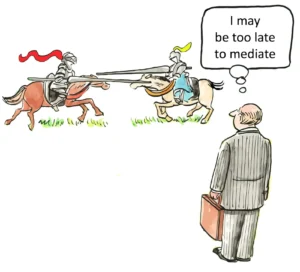A Legal Guide to Economic and Non-Economic Damages in Injury Cases for 2025
A personal injury can have a deep impact on an individual’s life, extending beyond physical harm to create significant financial and emotional burdens. When an injury is caused by the negligence or wrongful act of another, the civil justice system provides a mechanism to compensate the victim. This compensation is legally referred to as damages. It is the primary method through which the law attempts to make an injured party whole again. Understanding the complexities of this process is fundamental for anyone seeking restitution. In this guide, we will explore the two primary categories of damages awarded in injury cases—economic and non-economic damages—and examine the methods used to calculate and substantiate each claim.
Defining economic damages: The tangible costs of an injury
Economic damages represent the objective, verifiable monetary losses a person incurs as a direct result of an injury. These tangible costs can be documented with bills, receipts, and financial statements. Maintaining meticulous records of all such expenditures from when the injury occurs is crucial, as this documentation forms the foundation of a claim for economic compensation. These damages are not speculative but based on actual financial output and losses that can be precisely calculated.
Medical expenses (past and future)
The most significant component of economic damages is frequently medical expenses. It is imperative to document the costs for treatment already received and reasonably forecast the expenses for future medical care necessitated by the injury. This category encompasses various costs, including emergency room visits, hospital stays, surgical procedures, prescription medications, rehabilitation services such as physical therapy, and necessary medical equipment like wheelchairs or prosthetic devices.
Lost wages and diminished earning capacity
An injury often prevents an individual from working, leading to substantial financial strain. The law accounts for this through two distinct concepts. Lost wages refer to the income an individual loses due to time away from their job during the recovery period. In contrast, diminished earning capacity is defined as the loss of future income resulting from a long-term or permanent injury that prevents a person from returning to their previous job or working the same number of hours. This distinction is imperative for securing fair compensation for injuries with lasting career implications.
Property damage and other out-of-pocket costs
In many personal injury cases, particularly automobile accidents, the victim’s personal property is also damaged. This category of economic damages covers repair or replacement costs of property damaged in the incident, most commonly a vehicle. Beyond property repair, several other out-of-pocket expenses directly related to the injury can be recovered. Tracking these seemingly smaller costs is crucial, as they can become a significant financial burden over time.
- Rental car fees
- Towing and storage costs for a damaged vehicle
- Costs to modify a vehicle or home to accommodate a disability
- Travel expenses for medical appointments
- The cost of in-home care or domestic services that the injured person can no longer perform
Quantifying the intangible: A closer look at non-economic damages
Non-economic damages compensate a victim for subjective, non-monetary losses that result from an injury. While these damages are more difficult to assign a specific dollar value to, they are no less real or significant than economic losses. They acknowledge the profound personal and emotional toll an injury can take on a person’s life and overall well-being. Courts and insurance companies recognize that the true cost of an injury goes far beyond medical bills and lost paychecks.
Pain and suffering
This is perhaps the most well-known category of non-economic damages. Pain and suffering are legal terms for the physical discomfort and emotional distress an individual experiences due to their injuries. This includes not only the immediate, acute pain from the incident itself but also any chronic pain, ongoing discomfort, scarring, or physical disfigurement that persists long after the initial injury has been treated. The duration and severity of the pain are key factors in determining the value of this component of a claim.
Emotional distress and mental anguish
Distinct from general pain and suffering, emotional distress and mental anguish address specific psychological impacts of an injury. An accident can be traumatic, leaving deep, lasting psychological scars. Compensation for mental anguish and emotional distress may be awarded for conditions such as anxiety, depression, persistent fear, insomnia, and post-traumatic stress disorder (PTSD). Documenting these conditions with reports from mental health professionals is essential to substantiating such a claim.
Loss of consortium and enjoyment of life
Serious injuries can fundamentally alter a person‘s ability to live their life as they did before. Loss of enjoyment of life, a form of hedonic damages, compensates individuals for their inability to participate in hobbies, recreational activities, and daily pleasures they once valued. Furthermore, an injury’s impact often extends to the victim’s closest relationships. Loss of consortium is a claim, typically brought by the spouse of an injured person, for the loss of companionship, affection, services, and intimacy resulting from the injury.
Substantiating your claim: Evidence and calculation methods in 2025
Building a successful personal injury claim requires more than simply listing losses; it demands a structured presentation of credible evidence to support every component of the damages sought. Understanding what evidence is needed and how different damages are calculated is vital for anyone navigating this complex legal process. The current legal landscape underscores the necessity of a well-supported claim.
The evidence required for damages
Every claim for damages, whether economic or non-economic, must be supported by compelling evidence. Recent litigation trends show dramatic shifts, with a 2025 Damage Awards Litigation Report revealing rising jury verdicts, making robust documentation more critical than ever. The type of evidence required varies significantly between the two main categories of damages. Gathering and preserving all relevant documentation from the outset is imperative to building the strongest possible case for full and fair compensation.
| Type of Damage | Evidence Required |
| Economic Damages | Medical bills, pharmacy receipts, vehicle repair estimates, pay stubs, tax returns, and expert reports from economists or vocational experts. |
| Non-Economic Damages | Personal journals detailing daily pain levels, testimony from friends and family, photographs/videos showing the impact on daily life, and reports from mental health professionals. |
Methods for calculating non-economic damages
Because non-economic damages are subjective, there is no simple invoice to determine their value. Instead, attorneys, insurance adjusters, and courts often rely on established methods to arrive at a reasonable figure. Two primary techniques are commonly used to provide a starting point for negotiations or a jury award. The choice can depend on the jurisdiction and the case’s specific facts.
The first is the Multiplier Method, where the total calculated economic damages are multiplied by a number, typically between 1.5 and 5. The specific multiplier depends on factors such as the severity and permanence of the injury, the impact on daily life, and the amount of evidence supporting the claim. A more severe and well-documented injury warrants a higher multiplier. The second is the Per Diem Method, assigning a dollar amount to each day from the accident date until the victim reaches what is known as maximum medical improvement. This method essentially calculates a per-day rate for suffering.
A case study: Calculating damages in a Washington car accident
Consider a hypothetical scenario: a driver is rear-ended on a highway in Washington state, resulting in a severe neck injury requiring surgery and subsequent post-traumatic stress related to driving. Traffic accidents continue to be a serious issue nationwide, with major incidents often highlighting the complex legal process for personal injury claims that follows. In our Washington case, the driver’s economic damages are calculated at $20,000 in medical bills and $10,000 in lost wages, for a total of $30,000. The initial police report and subsequent interactions with law enforcement are critical pieces of evidence, so it is important to know your rights. See our guide to your rights during a police encounter for more information.
An attorney might use the multiplier method to calculate non-economic damages. Given the need for surgery and the long-term diagnosis of PTSD, a multiplier of 4 might be justified, resulting in a non-economic damages claim of $100,000 ($25,000 x 4). Understanding the intricacies of state-specific laws is paramount. For instance, Washington uses a pure comparative fault rule, which can affect the final award. Navigating this complexity often requires a skilled Washington car accident lawyer to ensure a claim is valued correctly, especially as Washington has seen traffic fatalities reach their highest point since 1990. The actions of bystanders who render aid can also become relevant. Learn more in our guide to navigating Good Samaritan Laws and Legal Protections.
Navigating toward fair compensation
Securing compensation after an injury involves clearly understanding the damages to which one may be entitled. The distinction between tangible economic losses, which are calculated from receipts and pay stubs, and intangible non-economic losses, which account for human suffering, is a central tenet of personal injury law. For both categories, the absolute necessity of thorough documentation and credible evidence cannot be overstated, as it forms the bedrock of any successful claim. A comprehensive understanding of economic and non-economic damages empowers individuals to advocate for the full and fair compensation they rightfully deserve after an injury.


















